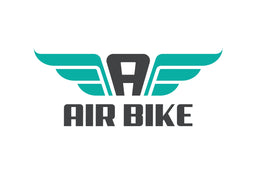Bottom Bracket Blues: Your Guide to a Smooth Ride
The bottom bracket, a seemingly simple component nestled within your bike's frame, plays a crucial role in your cycling experience. But what exactly does it do, and how do you know when it's causing trouble? This guide tackles your most burning bottom bracket FAQs, ensuring a smooth and silent ride.
What Does a Bottom Bracket Do?
Imagine the bottom bracket as the unsung hero of pedaling. It houses bearings that allow your crankset to spin freely, translating your leg power into forward motion. Without a properly functioning bottom bracket, pedaling becomes inefficient and frustrating.
How Do I Know if My Bottom Bracket Needs Replacing?
Several telltale signs indicate a bottom bracket on its last legs:
- Grinding or creaking noises: This is the most common symptom. The sound may worsen when you pedal under pressure.
- Difficulty pedaling smoothly: A worn-out bottom bracket can lead to increased friction, making pedaling feel sluggish.
- Excessive play in the crankset: If your crankset moves up and down or side-to-side excessively, the bearings in the bottom bracket may be failing.
How Often Do I Need to Replace My Bottom Bracket?
There's no one-size-fits-all answer. It depends on various factors like riding frequency, terrain, and maintenance practices. Generally, bottom brackets can last anywhere from a few thousand kilometers to over 10,000 kilometers. Regular cleaning and lubrication can extend their lifespan.
Why Do Bottom Brackets Fail?
- Dirt and grime: Contamination can wear down the bearings and increase friction.
- Improper installation: Incorrectly installed bottom brackets can lead to premature failure.
- Water ingress: Moisture can damage the bearings, especially with press-fit designs.
- Riding in harsh conditions: Exposure to mud, sand, and excessive water can accelerate wear and tear.
How Do I Stop My Bottom Bracket from Creaking?
A creaking bottom bracket can be caused by several factors besides wear and tear. Here's what you can try:
- Clean and re-lubricate: Remove the crankset and bottom bracket components, clean thoroughly, and re-apply grease following the manufacturer's instructions.
- Tighten the bottom bracket shell bearings (threaded only): Over time, these can loosen and cause creaking. Use the proper tools and be mindful not to over-tighten.
- Inspect for loose bolts: Ensure all crankset bolts and bottom bracket cups (if applicable) are properly tightened.
What Does a Worn Out Bottom Bracket Sound Like?
A worn-out bottom bracket typically produces a grinding or creaking noise when you pedal, especially under pressure. The sound may worsen as the bearing wear progresses.
Why Does My Bike Click When I Pedal Hard?
Clicking noises while pedaling can have various causes beyond the bottom bracket. Here are some possibilities:
- Cleat issues: Ensure your cleats are properly secured to your shoes and haven't worn excessively.
- Spoke tension: Loose spokes can cause clicking noises. Have your wheels checked for proper spoke tension.
- Pedal bearings: Worn pedal bearings can also produce clicking sounds.
What is the Life Expectancy of a Bottom Bracket Service?
A bottom bracket service typically involves cleaning, re-greasing, and adjusting the bearings. Its effectiveness depends on the condition of the bearings. If they're excessively worn, a complete replacement might be necessary.
Should Bike Cranks Spin Freely?
Yes, your bike cranks should spin freely with minimal resistance when you lift the bike off the ground and spin the cranks. However, a small amount of drag is normal due to the nature of the bearings.
How Do I Know If My Crank Bearings Are Bad on My Bike?
The signs mentioned earlier - grinding noises, difficulty pedaling, and excessive crankset play - can all indicate worn crank bearings, which are often part of the bottom bracket assembly.
Can You Put WD-40 on a Bottom Bracket?
No! WD-40 is a water displacing spray, not a lubricant. It can actually wash away existing grease and accelerate bearing


